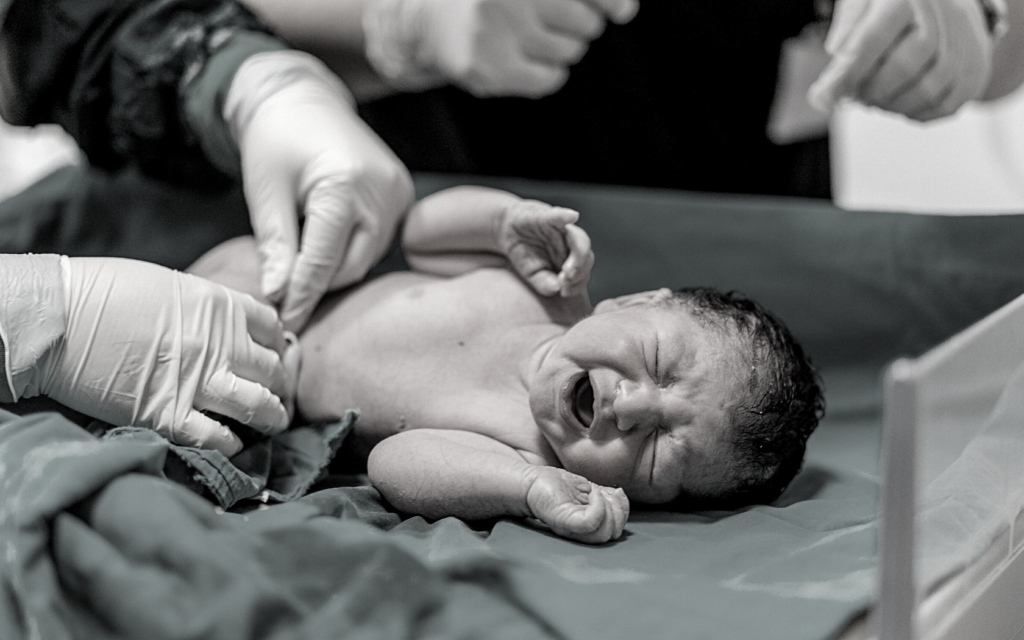Bringing life into this world is both beautiful and nerve-wracking. With a gestation period of 40 weeks, there’s a real possibility that things won’t always go 100% smoothly. Issues can pop up like umbilical cord compression, preeclampsia, gestational diabetes, and more. But with modern technology and medical advancements, doctors can tackle most issues as they come. Trained and specialized medical professionals can detect possible issues early on. We’ve come a long way, and the majority of babies are delivered healthy..but even still, medical complications DO occur.
Umbilical cord compression is a medical reality some mothers face. And while your doctor does not cause it, they can certainly help or harm the condition. If a doctor or midwife ignores the symptoms of umbilical cord compression, you may have a case of medical malpractice on your hands. Do you think your doctor failed to recognize problems during your pregnancy? Did it cause injury to you or your baby? Talk to a Hampton & King professional today to have your questions answered. Contact us for a free, zero-hassle consultation.

Causes Of a Compressed Umbilical Cord
The umbilical cord is one of the most essential parts when it comes to your pregnancy and your baby. Many refer to it as the “supply line.” This small tube connects a growing baby to a mother’s placenta. The umbilical cord carries blood back and forth from the placenta to the baby. It is how babies receive nutrients and oxygen essential for their survival.
While most pregnancies are void of umbilical cord complications, problems do occur. The flow of blood can get obstructed due to a compressed umbilical cord. This is known as umbilical cord compression. If medical professionals don’t recognize the issue and relieve pressure right away, blood flow and oxygen supply can be cut off. This failure to get the blood flowing properly can cause the baby to suffer severe umbilical cord compression injuries which can lead to cerebral palsy or permanent brain damage.
Causes Of Compression
Certain factors can increase the risk of umbilical cord compression. These include:
- Umbilical Cord Prolapse. This complication occurs when instead of the head entering the birth canal first, the umbilical cord does. The umbilical cord slips down in front of the baby and becomes compressed between the baby and the mother’s cervix. The chances of an umbilical cord prolapse increase if the mother’s water breaks well before labor.
- True Knot. Sometimes, the cord can become tied in a knot. If the knot tightens enough, it can cause serious compression. The risk factors for a true knot are high maternal age, a long umbilical cord, and high fetal movement in early pregnancy when lots of amniotic fluid is present.
- Nuchal Cord. These umbilical cord wraps happen when the umbilical cord gets wrapped around the baby’s neck. In approximately 20 – 30% of all childbirths, the umbilical cord is wrapped around the baby’s neck at least once. Oftentimes, nuchal cords can resolve themselves. Other times it may require immediate action by your medical team. A nuchal cord can cause compression and can also pose a strangling threat to the baby
- Abnormal Levels of Amniotic Fluid. Too little or too much amniotic fluid around the baby can cause umbilical cord compression.
Signs Of Umbilical Cord Compression Doctors Shouldn’t Miss
Unfortunately, you can’t always prevent umbilical cord compression. But a good medical team can in some situations detect it early enough to do something about it. Detecting umbilical cord compression signs means your baby can survive without any lasting injuries.
The signs of umbilical cord compression include:
- Meconium-stained amniotic fluid
- Decreased fetal movement
- Abnormal ultrasounds
- The baby’s heart rate is irregular
- Abnormal fetal positioning
A skilled doctor would likely recommend frequent monitoring to ensure the pregnancy progresses as much as it can before intervention would be needed. Incorporating fetal Doppler tests and performing non-stress tests can give your doctor a better idea of what is going on. And if cord compression is found to be severe, doctors have a few ways to manage it. This includes:
- Changing the Mother’s Position. Changing the mother’s position can potentially relieve pressure on the umbilical cord and improve blood flow to the fetus. This doesn’t always work though.
- Amnioinfusion. A saline solution is introduced into a mother’s uterus. This can help relieve some of the pressure and possibly help avoid umbilical cord compression.
- C-Section Delivery. If changes in heart rate and other fetal distress occur, doctors may determine the baby has more chance of survival outside of the womb than inside. Therefore, a c-section may be necessary.
- Increasing Oxygen. If the compression isn’t too severe, administering more oxygen to the mother can help increase blood flow within the cord.
A Doctor’s Neglect Can Lead To Serious Consequences
Properly managing umbilical cord compression depends on many details and signs – details the doctor may miss or falter on. When a doctor fails to recognize the signs of umbilical cord compression, it can lead to a lack of necessary monitoring and treatment. When the cord is compressed and the flow of nutrients/oxygen is restricted, it can cause long-lasting injuries including:
- Respiratory acidosis which can lead to respiratory failure
- Hypoxic-ischemic encephalopathy
- Seizures
- Breathing issues
- Irregular muscle tone
- Hemorrhage
- Cerebral Palsy
- Developmental disabilities

Breached Standard Of Care? You Could File A Lawsuit
Your provider has a duty to you, and all of their patients. If they fail to provide you with the standard of care, and it leads to umbilical cord compression complications, you may have a medical malpractice case.
Our team members can help you determine if your case warrants a lawsuit and if you may be due compensation for a doctor’s neglect. Contact Hampton & King today.
FAQs About Umbilical Cord Compression
Treating umbilical cord compression often requires immediate medical intervention. The medical professionals involved will try to alleviate pressure on the cord and get enough oxygen to the fetus. This may include repositioning the mother, administering oxygen, or, in severe cases, delivering the baby as soon as possible, potentially via emergency cesarean section.
Signs of umbilical cord compression can include abnormal fetal heart rate patterns, abnormal ultrasounds, and an irregular fetal heart rate. Doctors and nurses can detect these signs through fetal heart monitoring during pregnancy or labor. These patterns indicate distress in the fetus, which may be caused by umbilical cord compression.
Umbilical cord compression can be an emergency. Because reduced oxygen and blood flow to the fetus can lead to fetal distress, hypoxia, or other serious complications. Prompt medical attention is crucial to manage this condition effectively. Umbilical cord compression is not always an emergency, but even mild cases can rapidly evolve into severe ones.
Reduced oxygen and nutrient supply to the fetus. These complications can lead to fetal hypoxia, brain damage, developmental delays, and even stillbirth. It’s a serious condition requiring immediate medical intervention.
It depends on many details. But your legal options may include filing a medical malpractice lawsuit if your baby was injured because of negligent medical care. And to figure out the details? Discuss your situation with a birth injury attorney to evaluate your case details, determine liability, and discuss potential compensation.
There are a few things a doctor or nurse may recommend when umbilical cord compression happens. If the baby is not in serious or life-threatening distress, providing IV fluids to enhance the mother’s hydration can potentially improve blood flow and nutrient delivery. Switching the mother’s position (face-down or from one side to another) can help relieve the compression. Giving the mother supplemental oxygen can also help.




